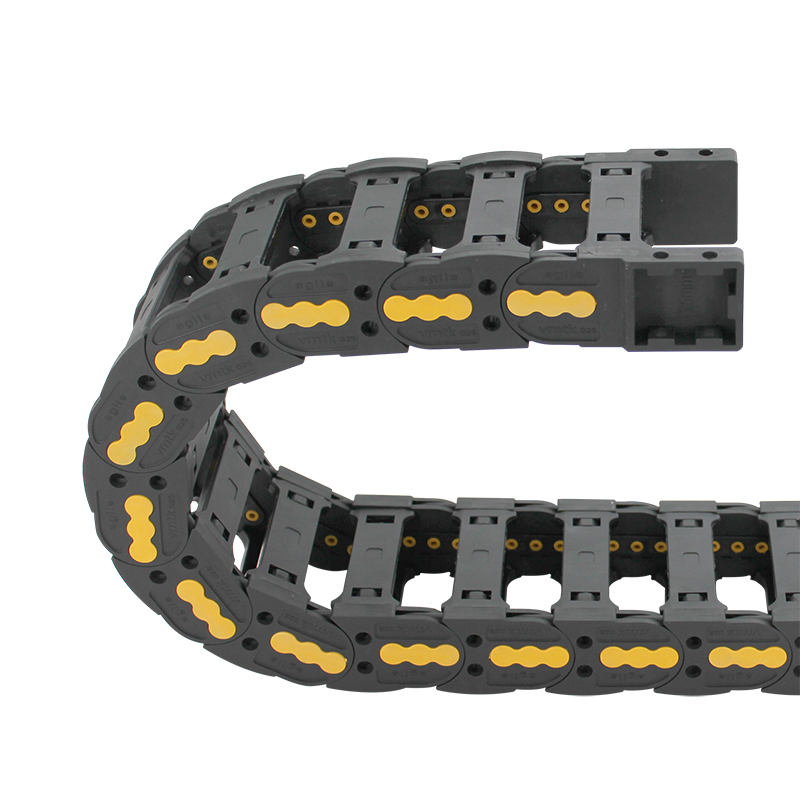electrical cable chain
Understanding Electrical Cable Chains A Comprehensive Overview
Electrical cable chains play a crucial role in modern industrial environments, providing essential pathways for electrical cables to be organized, protected, and managed efficiently. These cable chains, often referred to as cable carriers or energy chains, are engineered to withstand harsh operating conditions while ensuring optimal performance in various applications. This article explores the key functions, benefits, and applications of electrical cable chains, offering insights into their importance in the modern technological landscape.
What are Electrical Cable Chains?
Electrical cable chains are flexible systems designed to guide and protect moving cables and hoses in a variety of machinery and equipment. They consist of interconnected links that form a chain-like structure, allowing for movement while ensuring that cables remain untangled and secure. These chains can support various types of cables, including power supply cables, control cables, and communication lines, among others.
Key Functions of Electrical Cable Chains
1. Protection One of the primary functions of electrical cable chains is to protect cables from damage. By enclosing the cables in a robust and flexible carrier, the chains shield them from external elements such as dirt, dust, moisture, and physical abrasion.
2. Organization In industrial settings, where a multitude of cables is necessary, organization is key to maintaining efficiency. Cable chains help keep all cables organized, reducing clutter and making it easier to identify and troubleshoot issues when they arise.
3. Mobility Many industrial machines and equipment operate with moving parts. Electrical cable chains are designed to allow for smooth movement, facilitating the function of robotic arms, conveyors, and other machinery by providing a flexible mechanism that accommodates movement without putting stress on cables.
4. Safety Proper cable management is vital for workplace safety. Cable chains help minimize the risks of accidents caused by tangled or exposed cables, significantly reducing trip hazards and ensuring a safer working environment.
Benefits of Using Electrical Cable Chains
- Durability Electrical cable chains are constructed from high-quality materials such as plastic, steel, or aluminum, which provide long-lasting protection and can withstand high temperatures, chemicals, and mechanical stress.
electrical cable chain

- Cost-Effective By minimizing wear and tear on electrical cables, these chains extend the lifespan of cables, leading to reduced maintenance costs and fewer replacements in the long run
.- Ease of Installation Most electrical cable chains are designed for straightforward installation and maintenance. Their modular design allows for easy addition or removal of links, accommodating various lengths and configurations.
- Versatility Electrical cable chains can be used in numerous applications across different industries, including manufacturing, automotive, and robotics. They are adaptable to both horizontal and vertical movements, making them suitable for a wide range of installations.
Applications of Electrical Cable Chains
1. Industrial Automation In automated production lines, electrical cable chains facilitate the movement of robots and machinery, ensuring that power and signal cables remain organized and protected.
2. CNC Machines Computer Numerical Control (CNC) machines require precise movement and cable management. Electrical cable chains provide the necessary support to keep cables from snagging, enhancing the machine's performance.
3. Aerospace and Automotive In industries that demand high reliability and safety standards, electrical cable chains are critical in ensuring that cables are securely managed in assembly lines and moving parts, such as aircraft wings and automotive frames.
4. Construction Equipment Heavy machinery often faces rugged environments. Electrical cable chains protect essential cables in excavators, cranes, and loaders, ensuring that they operate smoothly without interference.
Conclusion
Electrical cable chains are indispensable components in the realm of industrial automation and machinery. By ensuring the protection, organization, and safety of moving cables, they optimize performance and contribute to the longevity of equipment. As industries continue to evolve and demand more sophisticated solutions, the role of electrical cable chains will undoubtedly become even more vital in the pursuit of efficiency and innovation.








